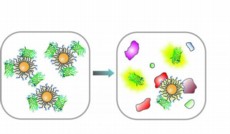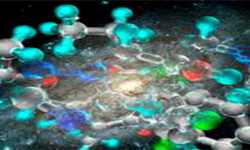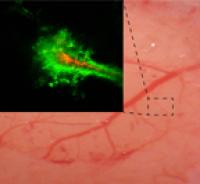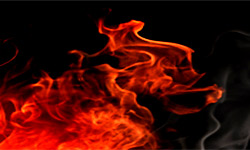Science
UMass Amherst Chemists Develop Nose-like Sensor Array to 'Smell' Cancer Diagnoses

In a pre-clinical non-small-cell lung cancer metastasis model in mice developed by Frank Jirik and colleagues at the University of Calgary, Rotello's team at UMass Amherst use a sensor array system of gold nanoparticles and proteins to "smell" different cancer types in much the same way our noses identify and remember different odors.
- Read more
- 538 reads
A Celestial Witch’s Broom?

The Pencil Nebula is pictured in a new image from ESO’s La Silla Observatory in Chile. This peculiar cloud of glowing gas is part of a huge ring of wreckage left over after a supernova explosion that took place about 11 000 years ago.
- Read more
- 399 reads
Nuclear Power: Extracting Uranium from Seawater

The material, HiCap (from high-capacity), outperforms today's adsorbents, which perform surface retention of solid or gas molecules, atoms or ions.
- Read more
- 405 reads
Non-Cytotoxic Nanosilver Structures Bring New Hope for Curing Infections

The obtained nanostructure is nontoxic to human cells, in contrast to the conventional silver nanoparticles, and possesses a spectacularly enhanced antibacterial effect.
- Read more
- 466 reads
Hubble Spotted a Supernova in NGC 5806

Hubble sees a supernova explosion called SN 2004dg on the edge of NGC 5806, a spiral galaxy in the constellation Virgo. It lies around 80 million light years from Earth.
- Read more
- 423 reads
Improved nanoparticles deliver drugs into brain

Real-time imaging of a rodent brain shows that nanoparticles coated with polyethylene-glycol (PEG) (green) penetrate farther within the brain than particles without the PEG coating (red)
- Read more
- 438 reads
New Method for Synthesis of Noble Metal-Based Nanoparticles on Various Substrates

Particularly tested for carbon based substrates such as carbon nanocabon tubes, the proposed method has enabled the synthesis of platinum-cobalt nanoparticles featuring lower dimensions, narrower size distributions and higher stabilities compared to the conventional methods.
- Read more
- 399 reads
Kepler's Supernova Remnant: Was Kepler's Supernova Unusually Powerful?

In 1604, a new star appeared in the night sky that was much brighter than Jupiter and dimmed over several weeks. This event was witnessed by sky watchers including the famous astronomer Johannes Kepler. Centuries later, the debris from this exploded star is known as the Kepler supernova remnant.
- Read more
- 377 reads
NASA Observations Point to 'Dry Ice' Snowfall on Mars

Observations by NASA's Mars Reconnaissance Orbiter have detected carbon-dioxide snow clouds on Mars and evidence of carbon-dioxide snow falling to the surface.
- Read more
- 490 reads
Extreme Life Forms Might be Able to Survive on Eccentric Exoplanets

A hypothetical planet is depicted here moving through the habitable zone and then further out into a long, cold winter.
- Read more
- 468 reads
Human Rights
Fostering a More Humane World: The 28th Eurasian Economic Summi

Conscience, Hope, and Action: Keys to Global Peace and Sustainability

Ringing FOWPAL’s Peace Bell for the World:Nobel Peace Prize Laureates’ Visions and Actions

Protecting the World’s Cultural Diversity for a Sustainable Future

Puppet Show I International Friendship Day 2020

